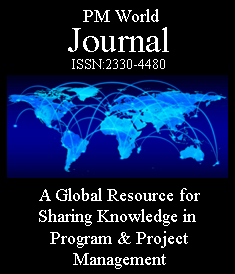The role of Early Adopter Collaboration in the CRISP Project
PEER REVIEWED PAPER
By Giaime Origgii, Antonio Calabreseii, and Davide Perraiii
i sarmap SA, Caslano, Switzerland
ii Department of Management, Economics and Industrial Engineering,
Politecnico di Milano, Milan, Italy
iii Certified Project Management Consultant, Milan, Italy
Abstract
This article examines the challenges and opportunities involved in applying Agile methodologies to ESA-funded Earth Observation (EO) projects, using the CRISP[1] initiative as a case study. While Agile frameworks emphasize iterative development and continuous stakeholder feedback, their translation into EO contexts, particularly in development-oriented environments, reveals structural and motivational limitations, especially in the role of Early Adopters (EAs).
Through a critical assessment of CRISP and the psychological dynamics of voluntary stakeholder engagement, the paper identifies key failure points: misaligned incentives, procedural overload, and the erosion of intrinsic motivation. These systemic fragilities risk reducing stakeholder participation to symbolic compliance, thereby undermining the goals of user-centered design.
To address these issues, the paper proposes a dual strategy. First, it explores the use of artificial intelligence—especially large language models and chatbots—as scaffolding tools that simulate EA feedback and sustain design iteration in the absence of consistent human input. Second, it advocates for the creation of structured, non-monetary incentive frameworks that include reputational capital, data reciprocity, and temporal targeting of EA engagement. Rather than offering prescriptive solutions, the article aims to inform future ESA frameworks and guide project managers operating in similar contexts. Its recommendations emerge from reflective practice and are positioned to support both institutional evolution and field-level implementation. Ultimately, the work encourages a strategic rethinking of stakeholder engagement as a designed and evaluable component of Agile EO project management.
Keywords: Agile Project Management, Earth Observation, Early Adopters, Generative AI, Collaborative Design, Stakeholder Engagement
Introduction
The adoption of Agile methodologies has profoundly reshaped project management paradigms by introducing iterative processes, continuous stakeholder collaboration, and adaptive planning [Beck et al., 2001; Highsmith, 2002]. Originally designed for software development where modular deliverables and intangible outputs aligned naturally with Agile principles, these methodologies have increasingly been applied across diverse sectors, typically adopting strict waterfall workflows, including Earth Observation (EO) and space-related programs [Giuliani et al., 2020].
Along with many international organizations such as FAO[2], CGIAR[3], and the Joint Research Centre (JRC), the European Space Agency (ESA) has progressively embraced Agile frameworks in an attempt to enhance the usability and responsiveness of Earth Observation-derived tools. Through programs aimed at converting satellite data into operational services, ESA seeks to bridge the gap between raw geospatial data and actionable intelligence, particularly in support of global policy agendas such as the United Nations’ Sustainable Development Goals (SDGs) [Fritz et al., 2019].
However, the transposition of Agile frameworks into EO projects presents significant challenges. Unlike software systems, EO solutions frequently entail rigid workflows, hardware dependencies, and multi-level stakeholder ecosystems that complicate the straightforward adoption of Agile practices. The CRISP (Consistent Rice Information for Sustainable Policy) project exemplifies these tensions. Implemented under the ESA-funded initiative Earth Observation for SDG Targets and Indicators – Lot-2, CRISP aims to deliver scalable solutions for rice monitoring and yield fore- casting, with a focus on supporting decision-makers particularly in low- and middle-income countries [Origgi et al., 2025].
The solution proposed within this project combined multi-mission EO data with agronomic and hydrological information to generate products such as rice area maps, crop calendars, and yield estimates. While technically ambitious, CRISP is particularly relevant for this study because it explicitly embedded Early Adopters (EAs) as central stakeholders in the design loop. Their role was to ensure that the developed solutions would align with operational decision-making contexts. Yet, despite this formal integration, CRISP encountered recurrent difficulties in sustaining EA participation, a challenge symptomatic of many EO co-design initiatives.
This paper focuses on the pivotal but problematic role of Early Adopters (EAs) in Agile inspired EO initiatives. Defined as pre-selected stakeholders intended to guide design decisions and validate intermediate outputs [Rogers, 2003], Early Adopters are formally recognized in ESA’s Statements of Work (SoW) as central actors in the user-centered development process. Yet, in practice, their engagement often suffers from structural weaknesses, primarily due to the lack of direct economic incentives, inadequate stakeholder management mechanisms, and an overreliance on voluntary participation.
By critically examining the CRISP project and integrating psychological insights into stakeholder motivation, this study aims to highlight systemic limitations in the co-design models commonly adopted in Earth Observation projects led by public-sector and intergovernmental institutions . To address these issues, it proposes a dual strategy: first, leveraging artificial intelligence (AI)—particularly recent large language models such as GPT-4, GPT-5, Claude 3.5, and Gemini 1.5—as complementary tools for simulating stakeholder feedback during early design phases; second, suggesting restructured engagement models that incentivize active participation through non-monetary rewards and structured reciprocity. The overall aim is to provide project managers with new avenues for sustaining commitment over time and to inform institutional frameworks for future EO projects.
More…
To read entire paper, click here
How to cite this paper: Origgi, G., Calabrese, A., Perra, D. (2025). Enhancing Agile Approaches in Earth Observation: the role of Early Adopter Collaboration in the CRISP Project; PM World Journal, Vol. XIV, Issue X, October 2025. Available online at https://pmworldlibrary.net/wp-content/uploads/2025/10/pmwj157-Oct2025-Origgi-et-al-Enhancing-Agile-Approaches.pdf
About the Authors

Giaime Origgi
Caslano, Switzerland
![]()
Giaime Origgi is a Project Manager at sarmap and an expert SAR (Synthetic Aperture Radar) Engineer. His experience includes managing strategic, ESA-funded projects and leading international consortia. Previously, he served as Project Manager for the SimSAR project, which focused on developing a SAR data simulator for Automatic Target Recognition (ATR) systems within the security and defense domains. He is a founding member of the Project Management Club at GSoM POLIMI and serves as an Ambassador for the school’s Swiss Chapter. His expertise is focused on the project management of complex remote sensing projects, the application of AI techniques to operations, and advanced data processing. A former professional athlete with multiple international wins, he is also a member of the International Orienteering Federation’s MTB Commission. He is a co-author of scientific articles in various remote sensing application fields (including forestry, mining, hydrogeology, and landslides) and serves as a technical trainer.

Antonio Calabrese
Milan, Italy
![]()
Antonio Calabrese is an Associate Professor of Industrial Plant Management and Industrial Plants at the Politecnico di Milano, School of Management (Italy) and Director of the international executive Master in Project Management at the Graduate School of Management (Polimi GSOM). Former Director of the MBA&EMBA programs, Corporate Education, Master in Strategic Project Management (European), and executive Master in Nuclear Plants Construction and Management, since many years he is invited as visiting professor at the Shandong University (Jinan, PRC) and had some cooperation with other universities in Europe (e.g. Heriot Watt University in UK and Umeå University in Sweden). He is member of the IPMA Ethics Committee and of the Steering Committee of IPMA Italy, and previously of the IPMA Advisory Committee. He is reviewer of scientific journals and conferences, and International Academic Advisor of the PM World Journal. In the field of industrial and management engineering he is interested in project, program and portfolio management (project governance, risk management, planning, control and stakeholder management) as well as the design and management of industrial plants, and strategic planning. He is author or co-author of more than 80 scientific papers and books.

Davide Perra
Milan, Italy
![]()
Davide Perra is a Project Management Consultant and POLIMI Graduate School of Management Alumnus and Ambassador, where he graduated with a thesis on performance monitoring in the Space Sector. Currently active primarily in the media and publishing industry, with extensive cross-sector experience and a strong interest in Aerospace, he has explored performance and stakeholder management, leveraging this expertise in consultancy and management roles related to corporate launches, recovery plans and M&A.
[1] Consistent Rice Information for Sustainable Policy
[2] Food and Agriculture Organization
[3] Consultative Group on International Agricultural Research









